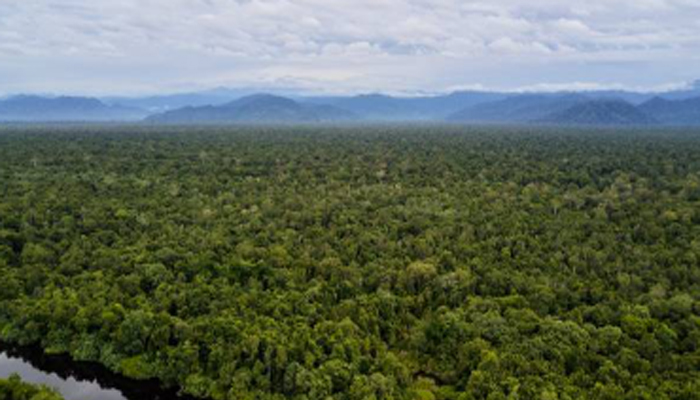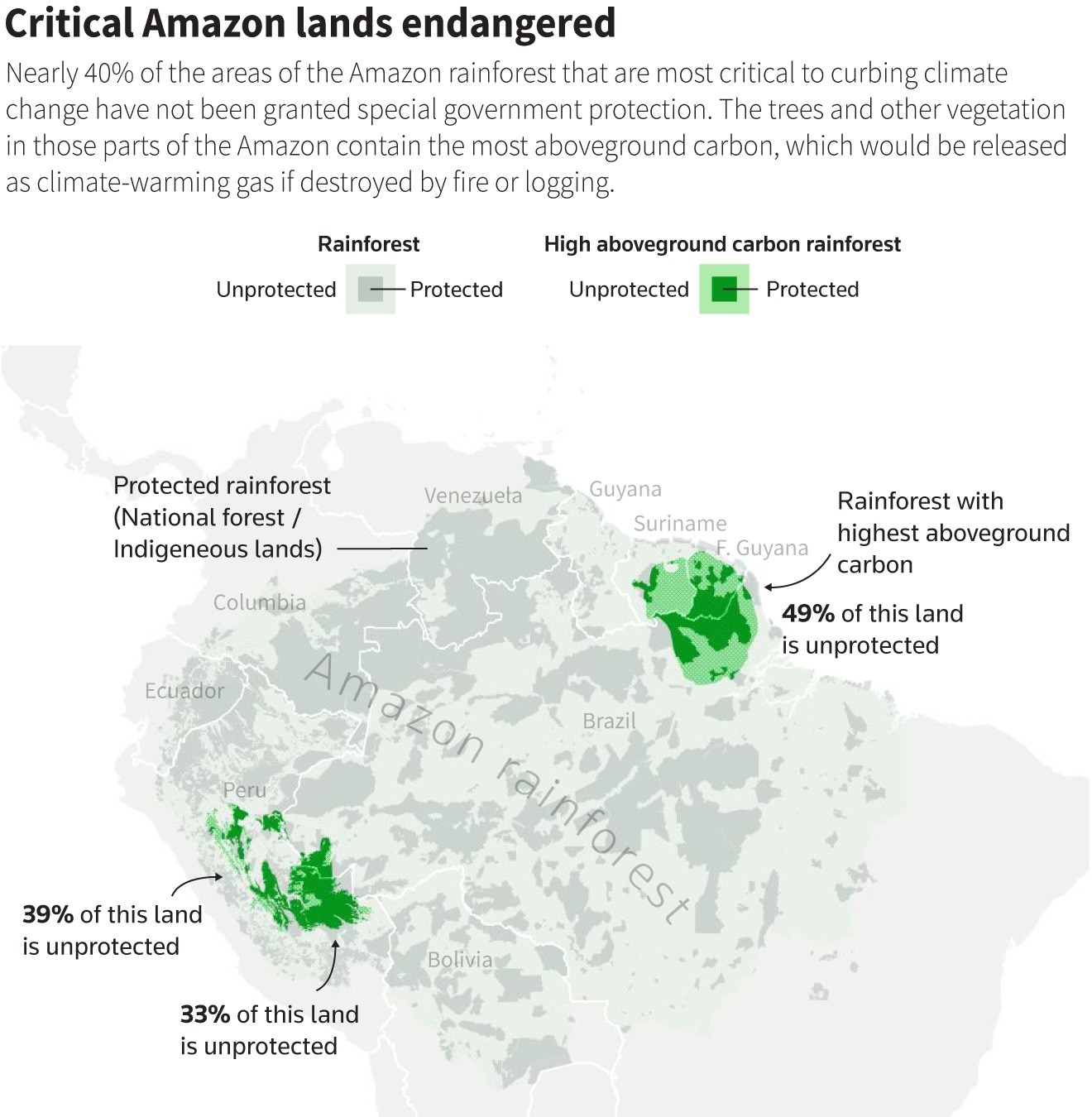
By Sahil Sharma: Preserving the Amazon rainforest is widely acknowledged as crucial in the fight against global warming. However, recent data released by the nonprofit Amazon Conservation reveals that nearly 40% of Amazon’s most critical areas for climate change mitigation remain unprotected. These vital regions, located in the far southwest of Peru and the far northeast of Brazil, French Guiana, and Suriname, are home to the largest and densest trees and the most continuous canopy cover, which store significant amounts of carbon. If these forests are destroyed by logging or fire, the carbon stored within them could be released into the atmosphere, exacerbating global warming.
Protection Status and Data Analysis
The analysis, conducted by Amazon Conservation using satellite imaging and machine-learning models, highlights that 61% of the peak carbon areas in the Amazon are currently under some form of protection, either as indigenous reserves or other protected lands. However, in Brazil, Suriname, and French Guiana, this figure drops to 51%. Peru shows a higher proportion of protected areas, yet some of these unprotected regions are designated for logging activities. The data, derived from satellite imaging by Planet that employed lasers to create a three-dimensional map of the forest, underscores the discrepancy in protection. This analysis focused solely on aboveground vegetation, excluding carbon stored in roots and soils, which further complicates the full scope of potential carbon emissions.
Amazon’s Carbon Storage and Climate Impact
The Amazon rainforest plays a pivotal role in regulating global climate. It contains approximately 71.5 billion tonnes of carbon, which is about twice the global carbon dioxide emissions for 2022. While recent studies have shown that the Amazon has barely absorbed more carbon than it released in the decade leading up to 2022, the situation remains contentious. Some research suggests that the Amazon may now function as a net carbon emitter, a shift that could have dire consequences for global climate stability.

The Amazon Rainforest: Key Facts and Figures
Spanning nine South American countries—Brazil (60%), Peru, Colombia, Venezuela, Ecuador, Bolivia, Guyana, Suriname, and French Guiana—the Amazon covers an area of 5.5 million square kilometers. This expanse represents over half of the world’s remaining rainforests and would be the ninth-largest country if considered as one. It is home to about 10% of Earth’s known species, including over 40,000 plant species, 2.5 million insect species, and unique animals such as the pink river dolphin and poison dart frogs. The Amazon also plays a crucial role in the global climate by storing 123 billion tons of carbon, regulating precipitation and weather patterns, and producing 20% of the world’s oxygen. It releases approximately 20 billion tons of water into the atmosphere daily, influencing regional and global climate systems.
Human Impact and Conservation Efforts
The Amazon is home to around 30 million people, including 350 indigenous and ethnic groups, and is essential for their livelihoods through sustainable products. However, it faces significant threats from deforestation driven by cattle ranching, soy cultivation, and illegal activities like logging and mining. Climate change is exacerbating the situation by causing longer dry seasons, which increase the risk of forest fires. Conservation efforts include protecting 45% of the Amazon through reserves and indigenous territories, international initiatives like REDD+ to reduce deforestation, and real-time deforestation monitoring via satellite.
However, the risk of reaching a tipping point where deforestation exceeds 20-25% of the forest, leading to a transformation from rainforest to savanna—remains a serious concern. Some regions are already shifting from carbon sinks to carbon sources, further highlighting the urgent need for enhanced protection and sustainable management.
